Ph.D - City and Regional Planning (Health Planning)
University of North Carolina at Chapel Hill - 2007
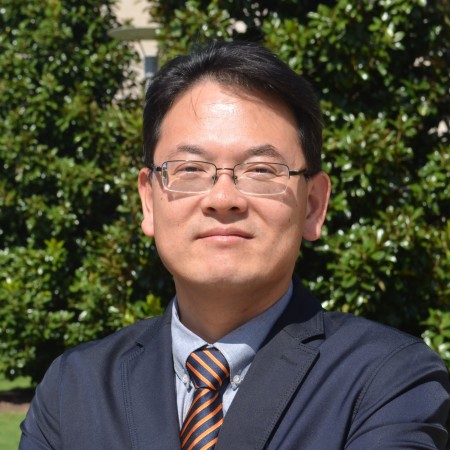
Dohyeong Kim
Senior Associate Dean of Graduate Education
Professor of Public Policy, Geospatial Information Sciences & Social Data Analytics and Research
Director of Geospatial Health Research Group
Professional Preparation
M.A - Public Administration
Yonsei University, Seoul - 1999
Yonsei University, Seoul - 1999
B.A - Public Administration
Yonsei University, Seoul - 1996
Yonsei University, Seoul - 1996
Research Areas
Global Health and Safety
Geospatial Health and Public Policy
Environmental Health and Disaster Planning
Spatiotemporal Big Data Analysis and Machine Learning
Publications
THE ATTITUDE–BEHAVIOR DICHOTOMY IN THE TIME OF COVID-19: AN EXPLORATION USING GENERALIZED STRUCTURAL EQUATION MODELING 2024 - Journal Article
INVITED PAPER — THE ATTITUDE–BEHAVIOR DICHOTOMY IN THE TIME OF COVID-19: AN EXPLORATION USING GENERALIZED STRUCTURAL EQUATION MODELING 2024 - Journal Article
Digital Mass Hysteria during Pandemic? A Study of Twitter Communication Patterns in the US during the Stages of COVID-19 Vaccination 2024 - Journal Article
Targeted Tick-Borne Disease Recognition: Assessing Risk for Improved Public Health 2024 - Journal Article
Improving Surveillance of Human Tick-Borne Disease Risks: Spatial Analysis Using Multimodal Databases 2023 - Journal Article
Regional Disparity in the Educational Impact of COVID-19: A Spatial Difference-in-Difference Approach 2023 - Journal Article
Identifying Hot Spots of Tuberculosis in Nigeria Using an Early Warning Outbreak Recognition System: Retrospective Analysis of Implications for Active Case Finding Interventions 2023 - Journal Article
Awards
Award of Appreciation - Asia Disaster Preparedness Center (ADPC) [2024]
President's Teaching Excellence Award - UT Dallas [2023]
Best Article Award - Asian Association of Crisisonomy [2022]
Teaching Award for Distinguished Graduate Teaching - UT Dallas School of EPPS [2020]
Award of Appreciation - UTD Korean Student Association [2018]
Outstanding Teaching Comet Award - University of Texas at Dallas [2014]
Award of Appreciation - NCCU MPA Class of 2013 [2013]
Research Fellow - Institute for Poverty Alleviation and International Development [2011]
New Investigators in Global Health (NIGH) Award - Global Health Council [2008]
Superior Graduate Student Award - SBS Seo-Am Academic Foundation [1998]
Appointments
Assistant to Associate Professor
North Carolina Central University [2008–2013]
North Carolina Central University [2008–2013]
Postdoctoral Research Associate
Duke University [2005–2008]
Duke University [2005–2008]
Research and Teaching Assistant
University of North Carolina at Chapel Hill [2000–2005]
University of North Carolina at Chapel Hill [2000–2005]
News Articles
An AI-powered tool monitors lung sounds
 Wheezing, crackling, and rumbling are signals that a respiratory disease is underway. To diagnose lung conditions, clinicians use a stethoscope to decipher lung sounds and spirometry to measure how much air a person can breathe in and out. However, subtle wheezing is easy to miss, and spirometry is difficult to use practically, especially in children.
Wheezing, crackling, and rumbling are signals that a respiratory disease is underway. To diagnose lung conditions, clinicians use a stethoscope to decipher lung sounds and spirometry to measure how much air a person can breathe in and out. However, subtle wheezing is easy to miss, and spirometry is difficult to use practically, especially in children.Dohyeong Kim, a public policy researcher at the University of Texas at Dallas, and his collaborators at Seogyeong University developed a real-time wheeze counting algorithm to differentiate normal and abnormal breath sounds and track their frequency (1). Clinicians could use this technology to remotely diagnose, monitor, and treat respiratory conditions, while patients could use it to self-manage symptoms.
What motivated you to conduct this study?
My background is in public and environmental health research from both the social science and medical perspectives. I have used Geographic Information Systems for spatial modeling of health and environmental data for most of my career. In 2018, I started working with medical doctors and computer scientists to integrate clinical data from lung patients with environmental indicators. We published one study showing an association between lung functionality and levels of air pollutants using a deep learning model (2). A major drawback of that research was our inability to collect lung sound data in real time. We published this latest study as pilot evidence that we can count how many abnormal sounds occur within a certain period. We developed the AI tools to diagnose symptom onset and symptom exacerbation through continuous monitoring of lung sounds. This is just one of several papers we are working on. We plan to eventually integrate lung sound data with environmental indicators, such as particulate matter levels and ozone concentration, to provide personalized and timely alerts to people who may be exposed to adverse levels of environmental pollutants.
What are the advantages of your system's predictions for patients with respiratory conditions?
A known trigger for asthma is indoor and outdoor air pollution. There are systems in place to monitor outdoor ambient air pollutants well, but not indoor pollutants. However, modern populations stay longer indoors. It would be beneficial for people to monitor their exposure to pollutants when they cook inside or when they light the fireplace so that we can collect those data and make a correlation with lung functionality. We aim to identify patterns that may not pose a concern to the general population but may be life threatening for individuals with pre-existing respiratory issues like asthma or chronic obstructive pulmonary disease. Severe wheezing is easily noticeable, but mild breathing difficulties are harder to identify. Our system identifies subtle wheezing better than a human. Doctors can detect subtle sounds with a stethoscope, but sometimes you want immediate feedback to decide if you need to go to a hospital. We want to predict potential asthma attacks and facilitate early intervention.
What would be the challenge of implementing this system for monitoring lung illnesses?
Our AI modeling algorithm works well. The data comes from a source that is widely used in many papers because it is already labeled, which helps train the algorithm. Labeling new patient data is challenging because medical professionals are busy, and sometimes they are not willing to spend their time on it. As the algorithm becomes smarter, there will be less need for intensive intervention by a human doctor. All the doctors we have been working with think that this is really promising, and they are willing to use it, but we do not know how much it will be used. Doctors currently lack the tools for real-time health monitoring and counting wheezing events. The hope is that more doctors will see the benefits of using our system — especially its ability to offer real-time insights — and will increasingly incorporate it into their practice.
What is next for this project?
We have obtained funding to develop a lung sound patch (3). Once it is fully developed and implemented, we will be able to put it on the chests of lung patients, where it can capture lung sounds in real time, filter out noise, and store the data in the cloud. Then using our algorithm, the system will automatically count wheezing events and provide doctors with data that allows them to give patients timely warnings or medical advice. This should facilitate data collection for improving the algorithm, which has been difficult to do because we need to obtain patient consent, and sometimes patients are in critical condition. Once this patch is available, data collection will be more convenient because the device is small and unobtrusive. We're also planning to combine this with any other types of biomarkers, such as body temperature or heart sounds, that people are willing to share.
Researchers Develop Way To Provide Asthma Attack Early Warnings
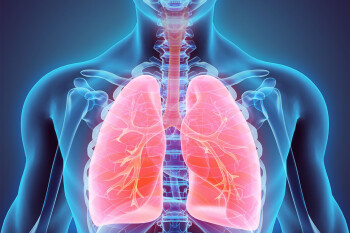 A University of Texas at Dallas researcher and his international colleagues have developed an algorithm that might one day provide early medical alerts about the onset of asthma attacks or other respiratory problems. The algorithm, described in a study published online Nov. 20 in the journal PLOS ONE, monitors a patient’s breathing in real time and analyzes the frequency of wheezes. The researchers hope to incorporate their work into a wearable device.
A University of Texas at Dallas researcher and his international colleagues have developed an algorithm that might one day provide early medical alerts about the onset of asthma attacks or other respiratory problems. The algorithm, described in a study published online Nov. 20 in the journal PLOS ONE, monitors a patient’s breathing in real time and analyzes the frequency of wheezes. The researchers hope to incorporate their work into a wearable device.“An automatic alarm could be sent to the patient — or the parents of children — for immediate attention,” said Dr. Dohyeong Kim, professor of public policy, geospatial information sciences, and social data analytics and research in the School of Economic, Political and Policy Sciences.
Kim, one of three co-corresponding authors, collaborated with a multidisciplinary team of physicians, environmental scientists, engineers and artificial intelligence (AI) technicians in South Korea. Lung diseases such as asthma, chronic obstructive pulmonary disease, lung cancer and bronchitis, and infections like pneumonia, are a major cause of death around the world. Kim’s team sought a way to use AI to monitor patients’ breathing conditions continually. Because abnormal breathing sounds, like wheezing and crackling, can be indicative of most lung and respiratory diseases, the researchers said it was essential to find a way to monitor lung sounds for symptom prevention and alleviation, as well as the early detection of various respiratory diseases. Currently, medical professionals most often listen for these sounds with a stethoscope to evaluate and diagnose patients. This requires considerable experience and expertise, and misunderstanding breathing sounds can lead to incorrect diagnoses.
Innovative Educators Earn President’s Teaching Excellence Awards
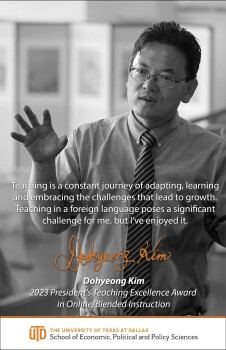 Dr. Dohyeong Kim, professor of public policy, geospatial information sciences, and social data analytics and research
Dr. Dohyeong Kim, professor of public policy, geospatial information sciences, and social data analytics and researchWhat was the best part of your teaching experience this year?
Witnessing my students’ growth and success. It brings me immense satisfaction to see a struggling student finally grasp a concept, observe a group of students work collaboratively toward a shared objective, and witness their overall progress and achievement.
What’s your advice for someone who wants to improve their online teaching abilities?
Keep your students engaged in dynamic class activities. Incorporating interactive and multimedia tools, such as videos, quizzes and online discussion forums, can be beneficial in maintaining students’ attention and interest. Create opportunities for students to share their thoughts and ideas in a virtual space. Furthermore, it is vital to remain adaptable to meet the needs of your students, especially those who may be new to online learning.
What is one of your favorite memories from teaching at UT Dallas?
Regardless of whether I am instructing a graduate or an undergraduate class, I always inspire my students to aim higher than simply achieving an A grade. Witnessing my students’ growth, both personally and professionally, is an unforgettable experience that I hold dear to my heart.
Researchers Use Geospatial Mapping To Assist Burn Patients
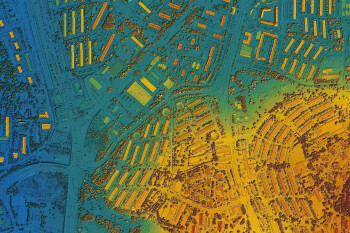 University of Texas at Dallas researchers are using geospatial mapping techniques to identify social and environmental obstacles in communities that might impede burn injury survivors’ reentry into society.
University of Texas at Dallas researchers are using geospatial mapping techniques to identify social and environmental obstacles in communities that might impede burn injury survivors’ reentry into society.The project is designed to help patients with burn injuries better adapt to their lives after medical discharge, including improving patient access to transportation, employment, food and other necessities.
Scotch and Dr. Dohyeong Kim, professor of public policy, geospatial information sciences (GIS), and social data analytics and research, are working on the project with researchers affiliated with the North Texas Burn Rehabilitation Model System, a joint program of UT Southwestern Medical Center and Parkland Health & Hospital System that is funded by the National Institute on Disability, Independent Living and Rehabilitation Research (NIDILRR), which is part of the U.S. Department of Health and Human Services. The UTD and UT Southwestern researchers received a five-year, nearly $250,000 grant for their geospatial mapping project from the NIDILRR.
Life Beyond the Pandemic
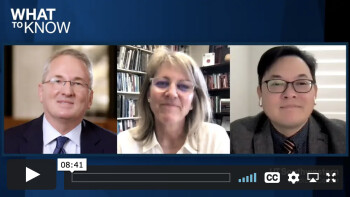 You are in for a fascinating conversation in the latest episode of “What To Know.” Two years after the COVID-19 pandemic began in the United States, and as the Omicron wave wanes, experts examine what the world will look like post-pandemic and how our lives will be forever changed. Dr. Warner moderates the episode, featuring medical anthropologist Carolyn Smith-Morris, Ph.D., M.S., LPC, of Southern Methodist University and Dohyeong Kim, Ph.D., a social scientist at UT Dallas.
You are in for a fascinating conversation in the latest episode of “What To Know.” Two years after the COVID-19 pandemic began in the United States, and as the Omicron wave wanes, experts examine what the world will look like post-pandemic and how our lives will be forever changed. Dr. Warner moderates the episode, featuring medical anthropologist Carolyn Smith-Morris, Ph.D., M.S., LPC, of Southern Methodist University and Dohyeong Kim, Ph.D., a social scientist at UT Dallas.
Affiliations
Advisory Board Member
2023/04DK Foundation
Vice President
2023/01Korean Association of Disastronomy
Chairperson, International Affairs Committee
2023/01–2023/12The Korean Association for Policy Studies
Member of National Election Commission Overseas Voting
2022/01–2024/06Republic of Korea
Chair
2020/06–2022/05ASPA Section on Korean Public Administration, American Society for Public Administration